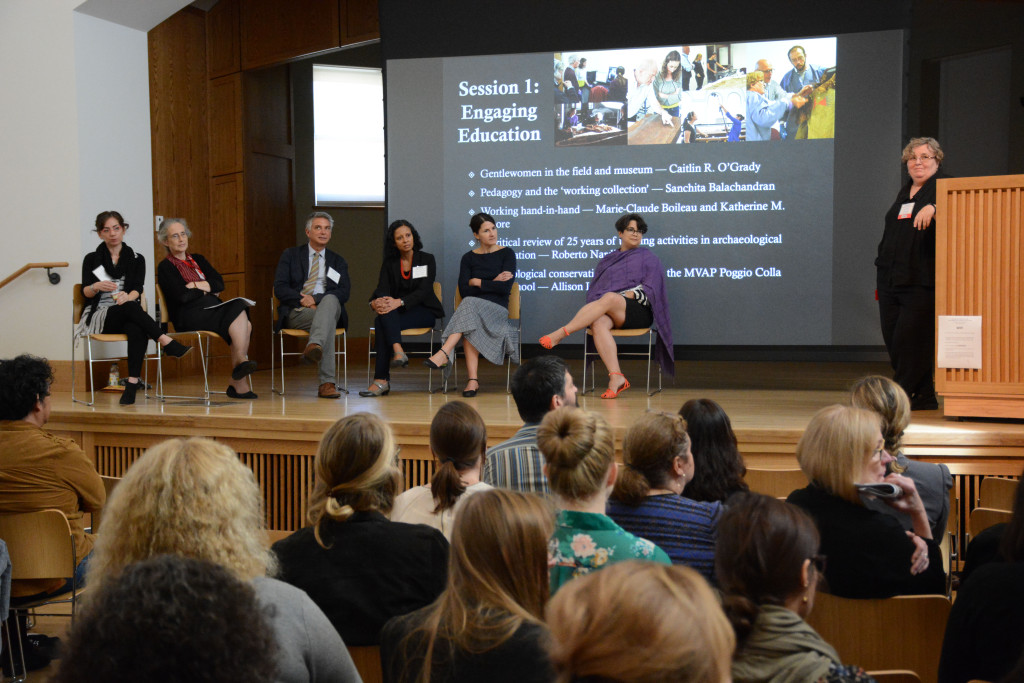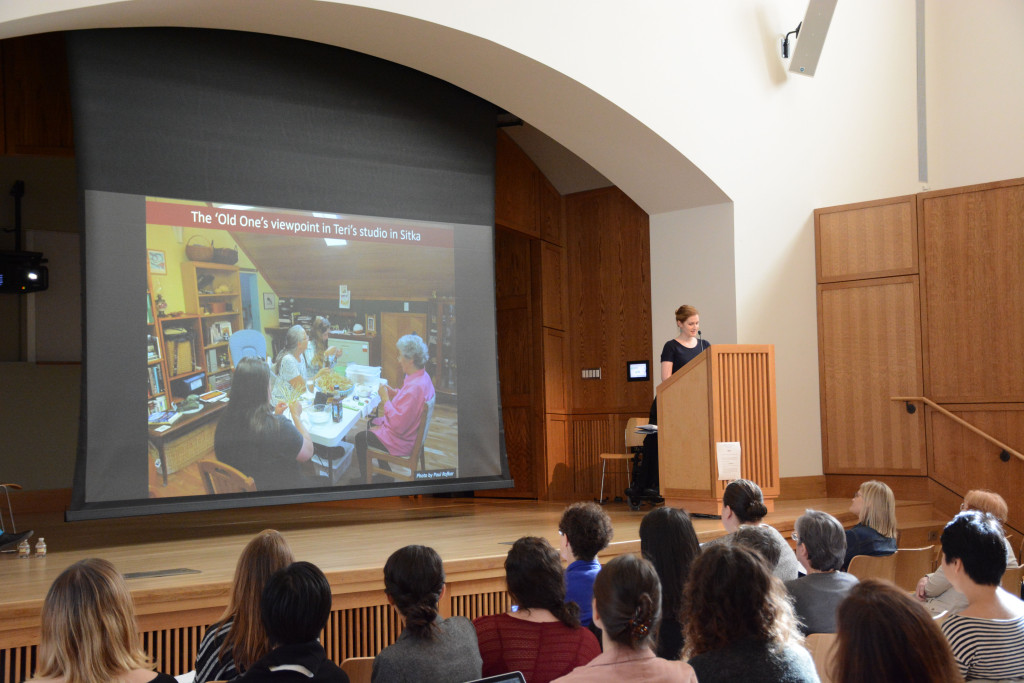This week’s contributing blogger, Julia Commander, is a third-year graduate fellow at the Winterthur/University of Delaware Program in Art Conservation, specializing in objects conservation. She is currently completing a curriculum internship at the University of Pennsylvania Museum of Archaeology and Anthropology.
To celebrate its 50th anniversary, the Conservation Department of the University of Pennsylvania Museum of Archaeology and Anthropology hosted a three-day symposium entitled Engaging Conservation: Collaboration Across Disciplines. The event provided a forum to discuss cross-disciplinary engagement and share how conservators have successfully partnered with diverse professions, institutions, and communities in order to complete ambitious projects. Speakers shared exciting case studies during the program’s five sessions and 29 talks, interspersed with discussion times and productive coffee breaks. Throughout the symposium, storytelling interludes illustrated the history of collaboration at the Penn Museum and encouraged reflection on the development of conservation as a field.

The first theme of the symposium explored education and training. Focusing on technical research projects with undergraduate students at Johns Hopkins University, Sanchita Balachandran emphasized the importance of taking risks and asking big questions to encourage student engagement. As she shared the experimental process of recreating Greek ceramics, documentary style footage, and blog excerpts showed interdisciplinary students excited by tackling the unknown. Kate Moore and Marie-Claude Boileau, from the Penn Museum’s Center for the Analysis of Archaeological Materials (CAAM), presented their perspective on object-based learning and how conservation has supported teaching goals. This partnership within the Penn Museum has fostered close-study of objects and promoted an understanding of analytical possibilities. Several speakers identified dual educational goals of access to original materials and first-hand exploration of manufacturing techniques.
On the second day of the symposium, the focus shifted to engaging communities. Diverse talks covered topics ranging from loaning ancestral artifacts to ongoing reburial efforts, and recurring ideas from the session included greater access to cultural materials and commitment to culturally appropriate treatments. In each case discussed, open dialogue with community leaders was central to project goals. A case study from the Autry Museum set a meaningful example of rectifying past conservation treatments with current ethical standards. Michele Austin-Dennehy, National Museum of Natural History, shared a fascinating case study that highlighted the National Museum of the American Indian’s workshop with contemporary copper artist Michael Belmore. This partnership lead to a more informed understanding of copper as a material and its use by the people of the Great Lakes Region. Bruno Pouliot and Leah Bright, speaking on behalf of Teri Rofkar, shared another moving case study, which focused on a Tlingit basket. The basket, known as an Old One, was given renewed purpose after its treatment at Winterthur Museum when it was returned to Sitka, Alaska. The basket has been used to teach weaving, interact with students, and even gather salmon berries. The basket made a long journey, and its conservation treatment has become a chapter of its history to be shared with others.

Another notable session discussed engagement and interaction with institutions. The idea of access recurred again with Tessa de Alarcon’s presentation of the Ur Digitization Project, which resulted in an online database to explore one of human history’s first cities. Practicalities of large-scale projects, such as bulk “blitz” treatments at Arizona State Museum and a major collections move at the Penn Museum, lead to useful discussions and sharing tips among audience members.
The final session of the symposium evaluated collaboration with scientists and new technological opportunities. Jessica Walthew shared a thoughtful presentation of photogrammetry techniques and the management of 3D data. The practical aspects of these techniques, and some of the associated ethical issues, sparked excited discussion in the group. In the final talk of the symposium, Kathryn Etre shared her experience partnering with Emory University resources to apply 3D scanning and printing for loss compensation of a kylix. Variations on this technique can be applied to compensation or even refabrication, and its potential continues to develop.
The symposium’s keynote address by Dr. C. Brian Rose, Curator-in-Charge of the Mediterranean Section at the Penn Museum, focused on his extensive fieldwork in Turkey and his long-term advocacy for conservation. Rose’s inspirational, and often humorous, speech emphasized how conservation can play a central role in the shared goal of preserving cultural heritage.
For further symposium details and abstracts, see http://www.penn.museum/loveconservation/schedule.php.
